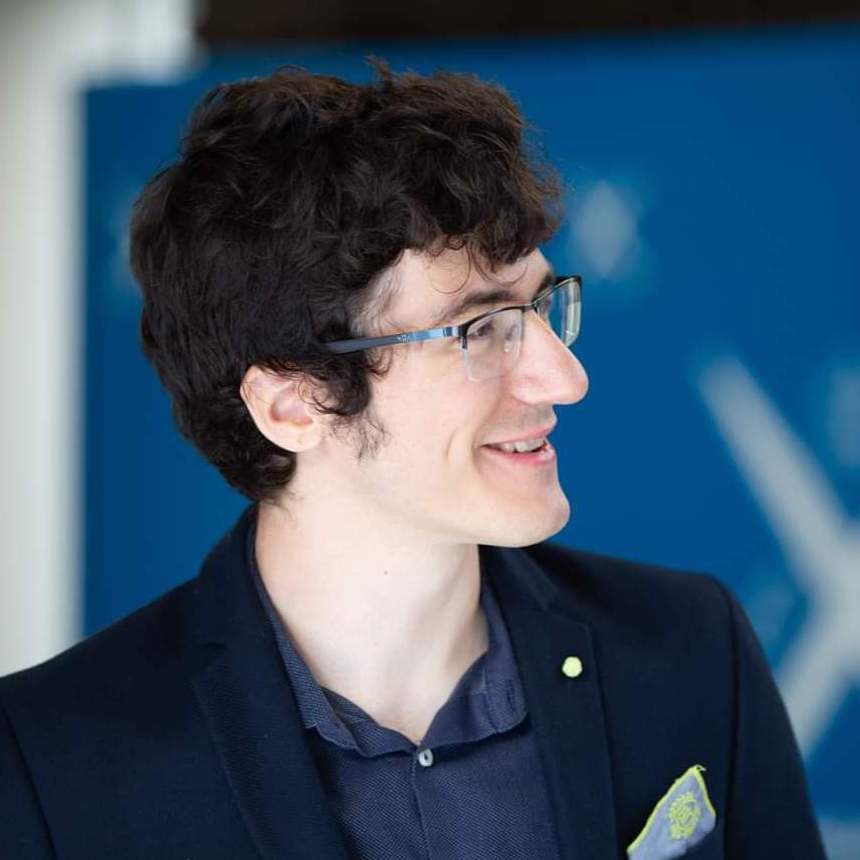DiffEdit: Diffusion-based Semantic Image Editing with mask guidance
Guillaume Couairon, Jakob Verbeek, Holger Schwenk, Matthieu Cord (ICLR 2023 Spotlight), 30 November 2022

We propose DiffEdit, a zero-shot algorithm that leverages the power of diffusion models for Semantic Image Editing.
Text-based Image Editing consists in modifying an input image according to an editing query in natural language. The query can be either a single novel caption for the image, or a pair of sentences describing the requested transformation (e.g. A bowl of fruits -> A basket of fruits). The aim is to match the novel image description as much as possible, while editing the input image as little as possible.
Diffusion Editing methods
-
SDEdit
The SDEdit algorithm edits image by adding noise to the input image and denoising it conditionally to the editing query.
-
Encode-Decode
The Encode-Decode algorithm first inverts the input image with reverse DDIM sampling, before denoising it contionnally to the editing query.
-
DiffEdit
The DiffEdit algorithm, given a text transformation query, automatically finds a ROI mask covering the image region to be edited. Masked diffusion sampling is then performed, combined with latent inference based on reverse DDIM sampling.
Examples:
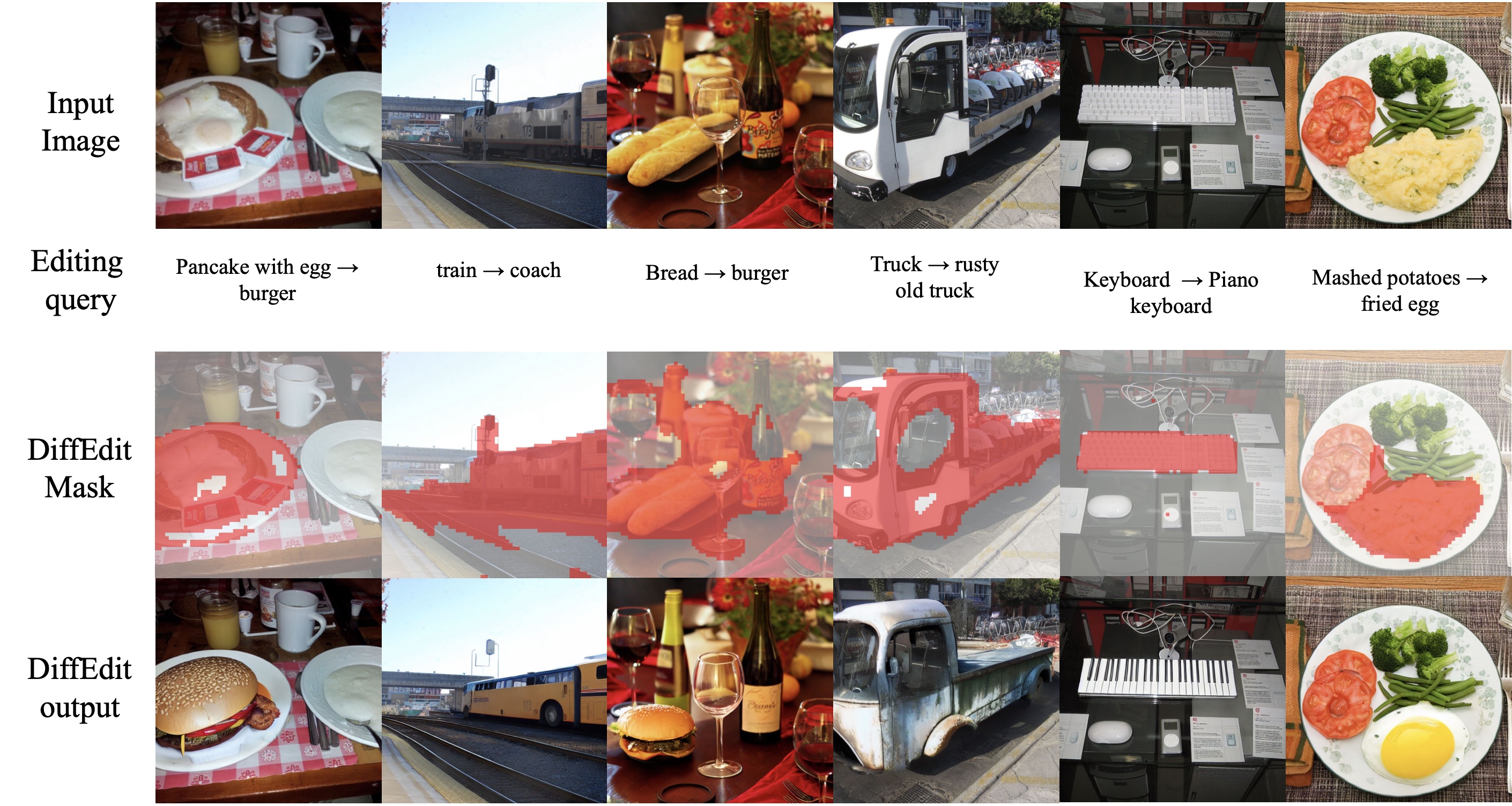
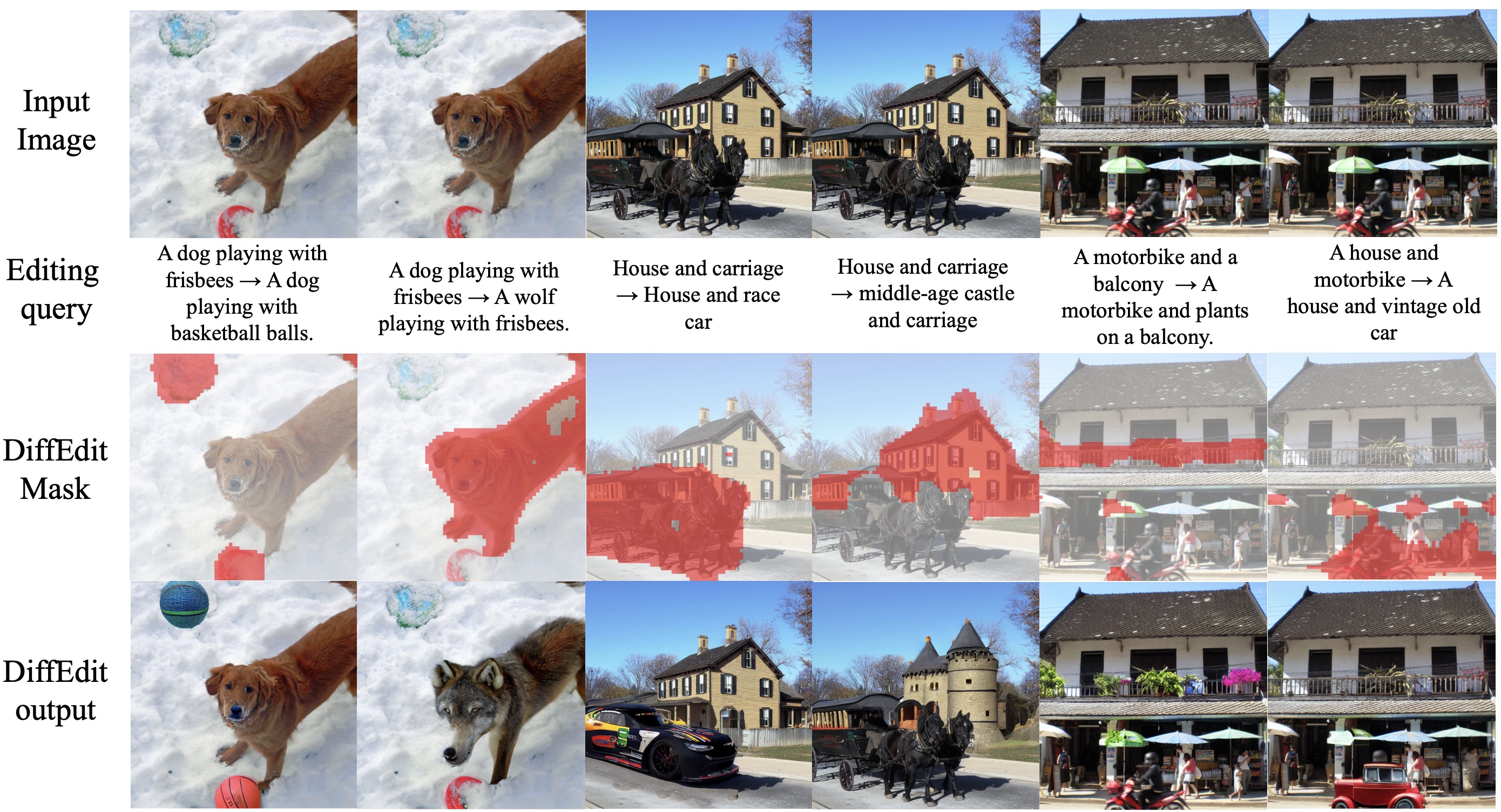
Benchmark
We propose a benchmark for evaluating text-based image editing models, based on three datasets (ImageNet, COCO, Imagen-Dataset) and three evaluation metrics: LPIPS (distance to input image), FID (image realism) and CLIPScore (alignment with target prompt). Text-based image editing methods have to satisfy the two contradictory objectives of (i) matching the text query and (ii) staying close to the input image. For a given editing method, better matching the text query comes at the cost of increased distance to the input image. Different editing methods often have a parameter that allows to control the editing strength: varying its value allows to get different operating points, forming a trade-off curve between the two objectives aforementioned. Therefore, we evaluate editing methods by comparing their trade-off curves. For diffusion-based methods, we use the encoding ratio to control the trade-off. See the paper for more details.
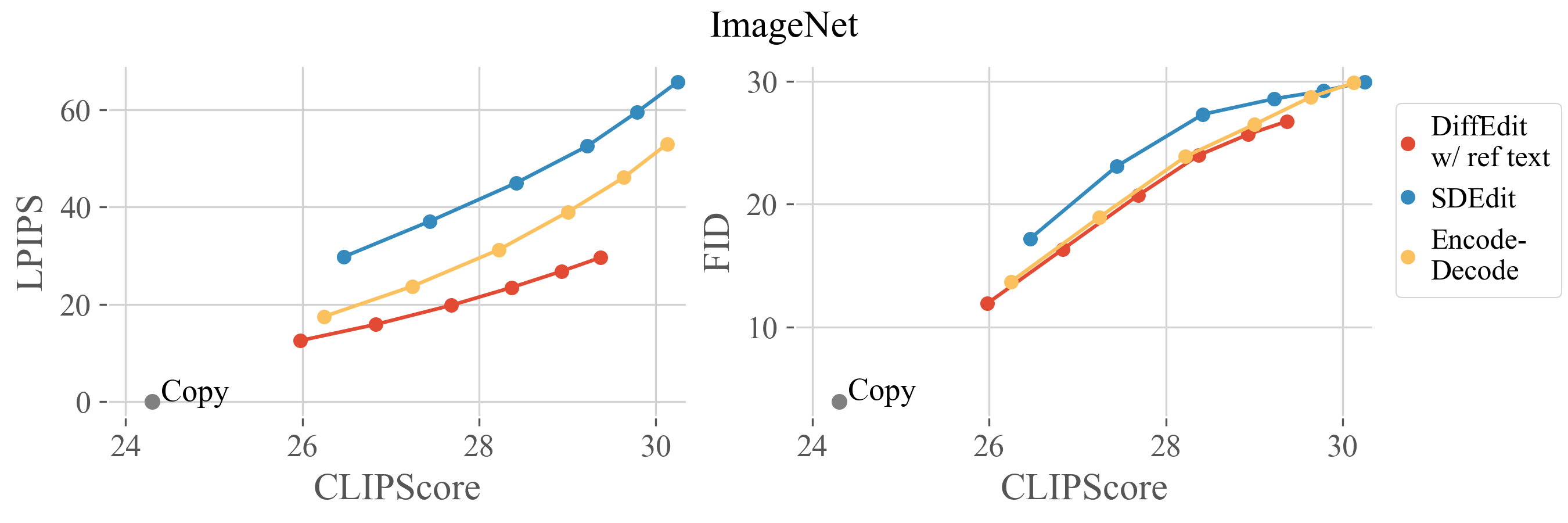
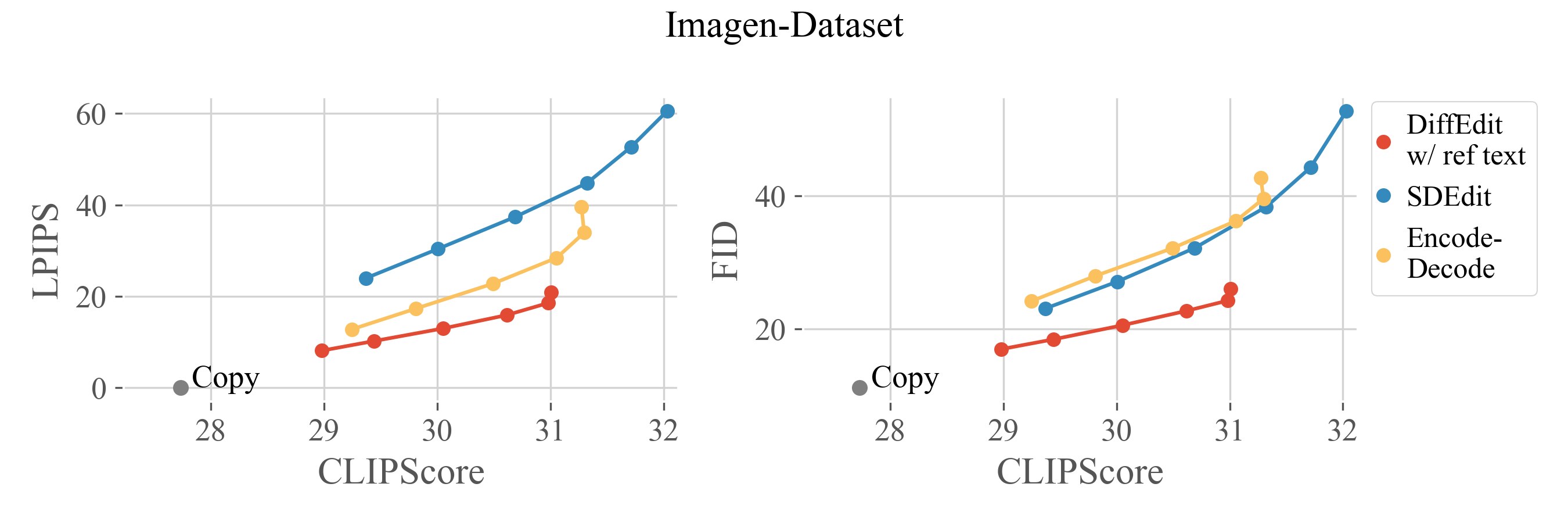

@article{couairon2022diffedit,
title={DiffEdit: Diffusion-based semantic image editing with mask guidance},
author={Couairon, Guillaume and Verbeek, Jakob and Schwenk, Holger and Cord, Matthieu},
journal={International Conference in Learning Representations},
year={2023}
}
Bibliography
Here is a list of work that you will find useful:
-
Prompt-to-Prompt Image Editing with Cross Attention Control [paper] [code]
-
Null-text Inversion for Editing Real Images using Guided Diffusion Models [paper]
-
UniTune: Text-Driven Image Editing by Fine Tuning an Image Generation Model on a Single Image [paper]
-
Unifying Diffusion Models’ Latent Space, with Applications to CycleDiffusion and Guidance [paper]
-
InstructPix2Pix: Learning to Follow Image Editing Instructions [paper]
